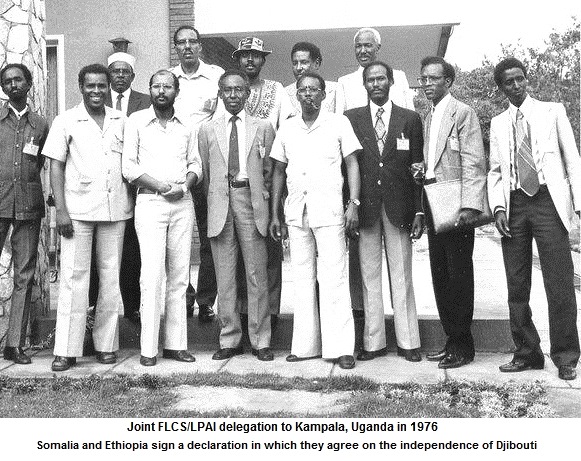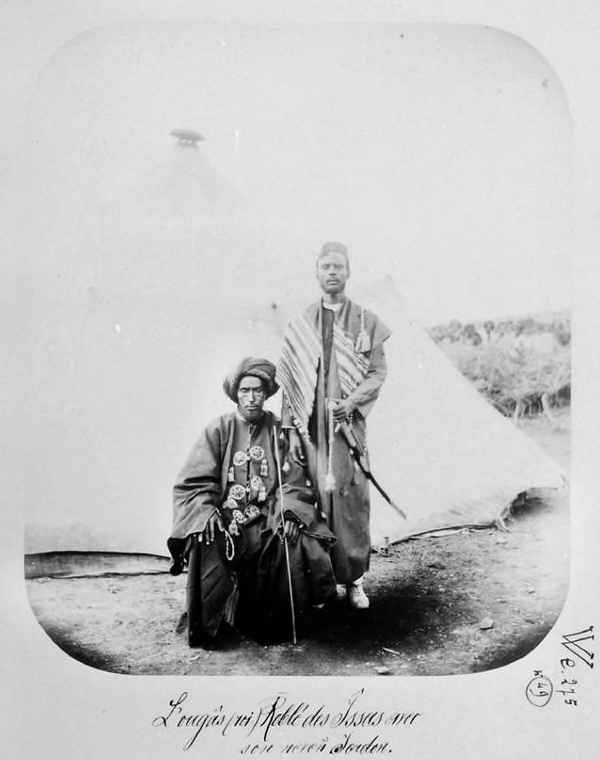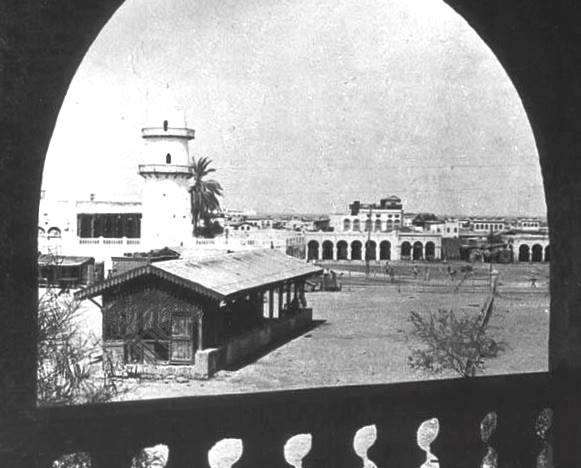|
Loyada
Loyada ( ar, لويعدا , so, Lowyacadde) is a small town in Djibouti. Located in the Arta Region, it is the only official border crossing from Djibouti into Somaliland. It is situated on the west coast of Gulf of Aden, from the capital, Djibouti. Etymology The name of the town derives from Afar ''Lē-ʿádu'' or ''Lē-ʿadó'', which means "white watering-place" and in Somali became ''Loowyaʿádde'', "with white calves", by cacography. The French colonial authorities wrote it "Loyada"; the standard Somali spelling is "Lawya caddo". History and politics During antiquity Loyada was part of the city-states that in engaged in a lucrative trade network connecting the merchants with Phoenicia, Ptolemaic Egypt, Greece, Parthian Persia, Saba, Nabataea, and the Roman Empire. Between Djibouti City and Loyada are a number of anthropomorphic and phallic stelae. The structures are associated with graves of rectangular shape flanked by vertical slabs. The Djibouti-Loyada stela ... [...More Info...] [...Related Items...] OR: [Wikipedia] [Google] [Baidu] |
Arta Region
Arta Region ( ar, إقليم عرتا, so, Gobolka Carta) is one of the six regions of Djibouti. It was officially created in 2003 by the regrouping of districts of the regions of Dikhil and Djibouti. It is situated in the south-central of the country, bordering the Tadjoura Region to the north, and the Djibouti Region to the north-east, and Dikhil Region the Ali Sabieh Region to the south, the country of Somaliland lies to the east. The capital of Arta Region is Arta. Other towns include We`a, Damerjog and Loyada. The Hemed mountain is the highest point in the region of Arta. History Nomadic life in the Arta Region dates back at least 2,000 years. During the Middle Ages, the Arta Region was ruled by the Ifat Sultanate and the Adal Sultanate. It later formed a part of the French Somaliland protectorate in the first half of the 20th century. Loyada village has a beautiful beach and a picturesque palm grove and the tombs of great historical leaders of this region. Halfway bet ... [...More Info...] [...Related Items...] OR: [Wikipedia] [Google] [Baidu] |
Djibouti
Djibouti, ar, جيبوتي ', french: link=no, Djibouti, so, Jabuuti officially the Republic of Djibouti, is a country in the Horn of Africa, bordered by Somalia to the south, Ethiopia to the southwest, Eritrea in the north, and the Red Sea and the Gulf of Aden to the east. The country has an area of . In antiquity, the territory, together with Ethiopia, Eritrea and Somaliland, was part of the Land of Punt. Nearby Zeila, now in Somaliland, was the seat of the medieval Adal and Ifat Sultanates. In the late 19th century, the colony of French Somaliland was established following treaties signed by the ruling Dir Somali sultans with the French, and its railroad to Dire Dawa (and later Addis Ababa) allowed it to quickly supersede Zeila as the port for southern Ethiopia and the Ogaden. It was renamed the French Territory of the Afars and the Issas in 1967. A decade later, the Djiboutian people voted for independence. This officially marked the establishment of the ''Rep ... [...More Info...] [...Related Items...] OR: [Wikipedia] [Google] [Baidu] |
Countries Of The World
The following is a list providing an overview of sovereign states around the world with information on their status and recognition of their sovereignty. The 206 listed states can be divided into three categories based on membership within the United Nations System: 193 member states of the United Nations, UN member states, 2 United Nations General Assembly observers#Present non-member observers, UN General Assembly non-member observer states, and 11 other states. The ''sovereignty dispute'' column indicates states having undisputed sovereignty (188 states, of which there are 187 UN member states and 1 UN General Assembly non-member observer state), states having disputed sovereignty (16 states, of which there are 6 UN member states, 1 UN General Assembly non-member observer state, and 9 de facto states), and states having a political status of the Cook Islands and Niue, special political status (2 states, both in associated state, free association with New Zealand). Compi ... [...More Info...] [...Related Items...] OR: [Wikipedia] [Google] [Baidu] |
French Foreign Legion
The French Foreign Legion (french: Légion étrangère) is a corps of the French Army which comprises several specialties: infantry, Armoured Cavalry Arm, cavalry, Military engineering, engineers, Airborne forces, airborne troops. It was created in 1831 to allow List of militaries that recruit foreigners, foreign nationals into the French Army. It formed part of the Army of Africa (France), Armée d’Afrique, the French Army's units associated with France's colonial project in Africa, until the end of the Algerian War, Algerian war in 1962. Legionnaires are highly trained soldiers and the Legion is unique in that it is open to foreign recruits willing to serve in the French Armed Forces. The Legion is today known as a unit whose training focuses on traditional military skills and on its strong Morale, esprit de corps, as its men and women come from different countries with different cultures. Consequently, training is often described as not only physically challenging, but also ... [...More Info...] [...Related Items...] OR: [Wikipedia] [Google] [Baidu] |
MG42
The MG 42 (shortened from German: ''Maschinengewehr 42'', or "machine gun 42") is a German recoil-operated air-cooled general-purpose machine gun used extensively by the Wehrmacht and the Waffen-SS during the second half of World War II. Entering production in 1942, it was intended to supplement and replace the earlier MG 34, which was more expensive and took much longer to produce, but both weapons were produced until the end of World War II. Designed to use the standard German 7.92×57mm Mauser rifle round, be low-cost and easier to mass-produce, the MG 42 proved to be highly reliable and easy to operate. It is most notable for its very high cyclic rate for a gun using full-power service cartridges, averaging about 1,200 rounds per minute compared to around 850 for the MG 34, and 450 to 600 for other common machine guns like the M1919 Browning, FM 24/29 or Bren gun. This ability made it extremely effective in providing suppressive fire, and its unique sound led to it being nick ... [...More Info...] [...Related Items...] OR: [Wikipedia] [Google] [Baidu] |
StG 44
The StG 44 (abbreviation of Sturmgewehr 44, "assault rifle 44") is a German assault rifle developed during World War II by Hugo Schmeisser. It is also known by its early designations as the MP 43 and MP 44 (''Maschinenpistole 43'' and ''44''). The StG 44 was an improvement of an earlier design, the Maschinenkarabiner 42(H). The StG 44 was the first successful assault rifle, with features including an intermediate cartridge, controllable automatic fire, a more compact design than a battle rifle with a higher rate of fire, and being designed primarily for hitting targets within a few hundred metres. Other rifles at the time were designed to hit targets of over a thousand meters, but this was found to be in excess of the range in which most enemy engagements actually took place. The StG 44 fulfilled its role effectively, particularly on the Eastern Front, offering a greatly increased volume of fire compared to standard infantry rifles. The StG largely influenced the Soviet AK-47, ... [...More Info...] [...Related Items...] OR: [Wikipedia] [Google] [Baidu] |
Front De Libération De La Côte Des Somalis
''Front de Libération de la Côte des Somalis'' (English: ''Front for the Liberation of the Somali Coast'') was a nationalist organization, and later a guerrilla group, in the French Territory of the Afars and the Issas in present-day Djibouti. It competes with the Djibouti Liberation Movement (MLD), supported by Ethiopia. The FLCS was recognized as a national liberation movement by the Organization of African Unity (OAU), which participated in its financing. History The FLCS was established in 1960 by Mahamoud Harbi. Its founding president was Adan Abdulle. French government policemen and Djibouti nationalists clashed in Djibouti City on August 25–26, 1966, resulting in the deaths of ten civilians and one government policeman. Twenty-seven individuals were arrested for their involvement in the demonstrations. The French government deported some 6,000 ethnic Somalis to Somalia between August 1966 and March 1967. Djibouti nationalists demonstrated for independence on September ... [...More Info...] [...Related Items...] OR: [Wikipedia] [Google] [Baidu] |
Jaldessa
Jaldessa ("Jal-de-ssa" which in Oromo literally translates to "Monkeys due to the monkeys surrounding the area") is a village in eastern Ethiopia, located in the Shinile Zone of the Somali Region of Ethiopia. The Central Statistical Agency has not published an estimate for the population of this village. It is located in Shinile woreda. History Early Modern Jaldessa is the area of the Nole Oromo near the border with the Issa somali and with Egyptian support the seat of the Issa was moved to Jaldessa. In 1875 Egyptian troops set up a fort to secure supply from the coast, and a contingent of Sudanese soldiers was stationed with an Egyptian officer. When the Egyptians entered Jaldessa they had recorded that the Nole oromo controlled the Harar-Berbera trade route. , they also went on to record that the Nole had subjugated the Issa around the city multiple times and that the Issa were scared of the Nole. People built huts around the station, which was fortified with stones and h ... [...More Info...] [...Related Items...] OR: [Wikipedia] [Google] [Baidu] |
British Somaliland
British Somaliland, officially the Somaliland Protectorate ( so, Dhulka Maxmiyada Soomaalida ee Biritishka), was a British Empire, British protectorate in present-day Somaliland. During its existence, the territory was bordered by Italian Somalia, French Somali Coast and Ethiopian Empire, Abyssinia (temporarily Italian Ethiopia). From 1940 to 1941, it was occupied by the Kingdom of Italy, Italians and was part of Italian East Africa. On 26 June 1960, British Somaliland declared independence as the State of Somaliland. Five days later, on 1 July 1960, the State of Somaliland voluntarily political union, united with the Trust Territory of Somalia (the former Italian Somalia) to form the Somali Republic. The government of Somaliland, a self-declared sovereign state that is internationally Diplomatic recognition, recognised as an autonomous region of Somalia, regards itself as the successor state to British Somaliland. History Treaties and establishment In the late 19th centur ... [...More Info...] [...Related Items...] OR: [Wikipedia] [Google] [Baidu] |
Djibouti City
Djibouti (also called Djibouti City and in many early English texts and on many early maps, Jibuti; so, Magaalada Jabuuti, french: link=no, Ville de Djibouti, ar, مدينة جيبوتي, aa, Gabuutî Magaala) is the eponymous capital of Djibouti, and has more people than the rest of Djibouti combined. It is located in the coastal Djibouti Region on the Gulf of Tadjoura. Djibouti has a population of around 600,000 inhabitants, which counts for 54% of the country's population. The settlement was founded in 1888 by the French, on land leased from the ruling Somali and Afar Sultans. During the ensuing period, it served as the capital of French Somaliland and its successor the French Territory of the Afars and Issas. Known as the ''Pearl of the Gulf of Tadjoura'' due to its location, Djibouti is strategically positioned near the world's busiest shipping lanes and acts as a refueling and transshipment center. The Port of Djibouti is the principal maritime port for imports to and ... [...More Info...] [...Related Items...] OR: [Wikipedia] [Google] [Baidu] |
Roman Empire
The Roman Empire ( la, Imperium Romanum ; grc-gre, Βασιλεία τῶν Ῥωμαίων, Basileía tôn Rhōmaíōn) was the post-Republican period of ancient Rome. As a polity, it included large territorial holdings around the Mediterranean Sea in Europe, North Africa, and Western Asia, and was ruled by emperors. From the accession of Caesar Augustus as the first Roman emperor to the military anarchy of the 3rd century, it was a Principate with Italia as the metropole of its provinces and the city of Rome as its sole capital. The Empire was later ruled by multiple emperors who shared control over the Western Roman Empire and the Eastern Roman Empire. The city of Rome remained the nominal capital of both parts until AD 476 when the imperial insignia were sent to Constantinople following the capture of the Western capital of Ravenna by the Germanic barbarians. The adoption of Christianity as the state church of the Roman Empire in AD 380 and the fall of the Western ... [...More Info...] [...Related Items...] OR: [Wikipedia] [Google] [Baidu] |


.jpg)




